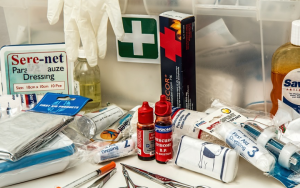Basic first aid training can help you get help or bring someone to life in the event of an accident or injury. If you’re a certified first aid supplier, it may help you and your loved ones. Although having an injury is the most disagreeable encounter, many people have this catastrophe at least one time in our life.
CPR contains chest compressions in addition to mouth-to-mouth resuscitation. As the individual performing CPR, you’ve got to be connected with the patient, even breathe right into his mouth. Listed below are certain safety precautions you have to remember if you’re doing CPR.
Use Shields and Sprays
 Whenever you do CPR to a patient, make certain to wear a face mask or shield to prevent direct contact with your individual. During transit, it’s feasible for fluids to be moved from the individual to you, a cover can protect you.
Whenever you do CPR to a patient, make certain to wear a face mask or shield to prevent direct contact with your individual. During transit, it’s feasible for fluids to be moved from the individual to you, a cover can protect you.
In the event of an injury, you might need to handle unpleasant scenarios. For this reason, you might choose to acquire at least the simple know-how of first aid. Face shields are transparent and have a one-way valve whereby you can offer the rescue breaths. Using protective gear such as masks and face shields safeguards your health and the victim’s since the sufferer has an equal prospect of getting an infection.
Wear Gloves
If you’re a healthcare worker or a paramedic and offer CPR frequently, you always have to wear gloves. Clean your hands with soap once each CPR administration. At a clinic or hospital setting, it’s required that you don gowns and eye equipment when you administer CPR in the event of blood becoming spilled in your eyes or face. After you complete CPR, eliminate all filthy gear like dresses and eye equipment, gowns, and masks to a bio bin.
Performing CPR on Infants
It would be best if you were extra careful once you perform CPR on infants and babies. If the infant isn’t breathing, do gentle compressions utilizing a maximum of three fingers. Gently push with your palms in the middle component of the infant’s torso under the nipple. When administering rescue breaths, then cover the infant’s nose in addition to mouth and breathe twice, every breath becoming one minute long.
